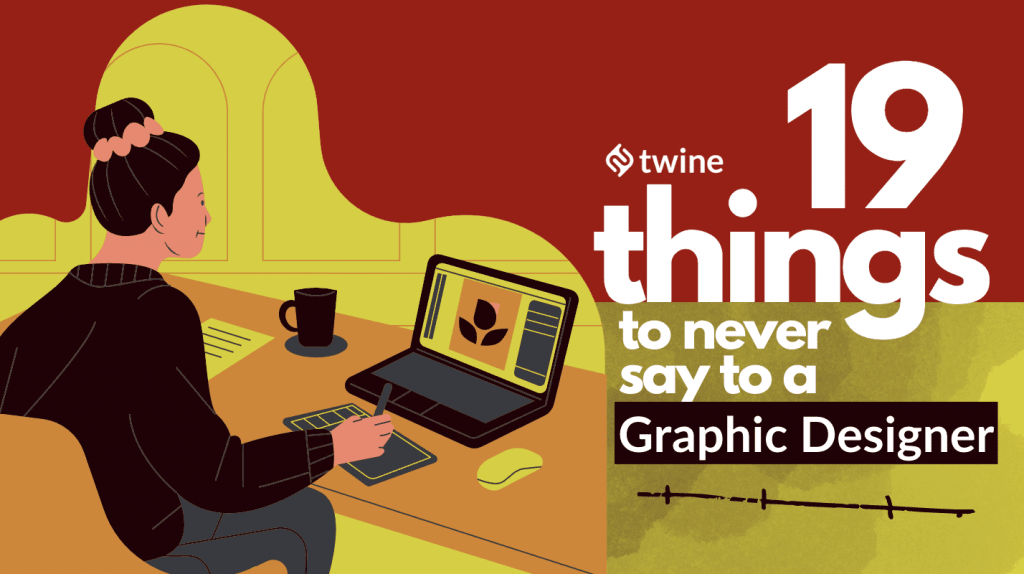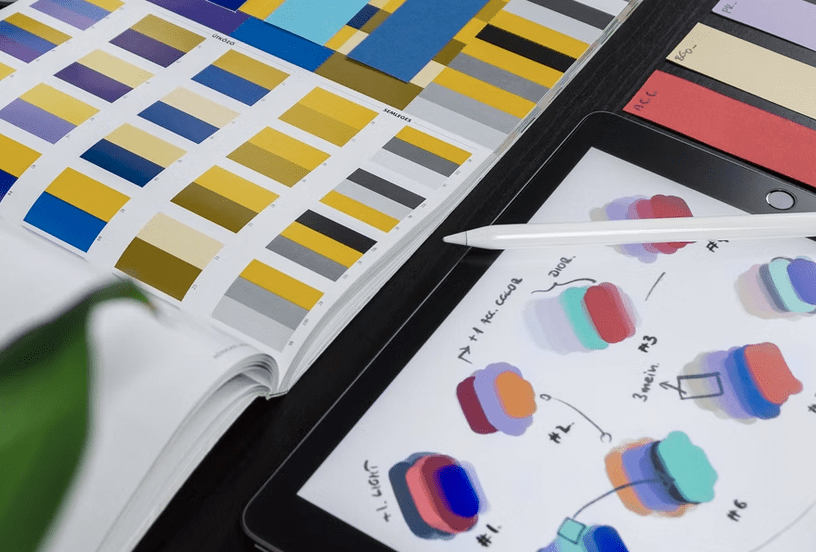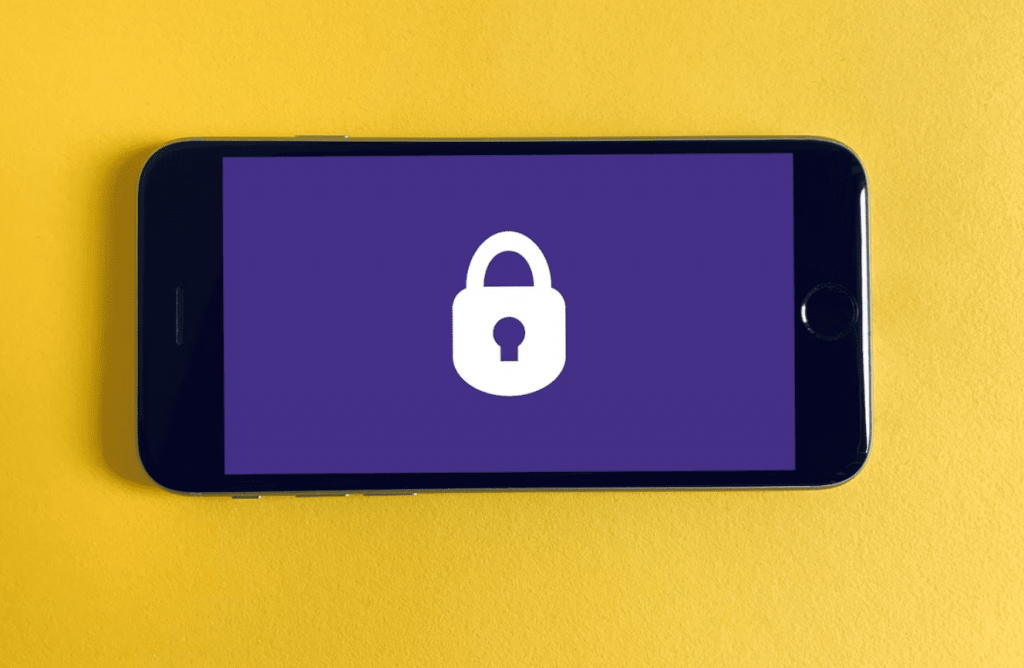
Graphic design can be a minefield for the uninitiated. Nobody truly knows what never to say to a graphic designer, do they?
It’s hard to get to grips with a profession that you don’t understand. You’ll find that most designers are relatively patient and understanding of this.
But, if it’s not handled well the graphic designer-client relationship can go sour pretty quickly...
A good first step is to make sure you’re not making unrealistic demands of your designer. Here are 19 all too common scenarios that every designer is fed up with hearing.
We hope you can avoid using them in your real-life projects so you can cut through the fluff and get down to making awesome work:
C: “I haven’t got any content yet, but can you do the design anyway?”

D: “Oh yeah, I can’t see any problems with that at all. As long as you don’t mind shaving down your content to fit into my design that won’t be an issue.”
Lesson 1: Content usually forms the layout of a design so you don’t want to start without it. You don’t always need to know exactly what the content will be to get started, but you do need to know how much there will be. Trying to squeeze 10 paragraphs into a space that fits 2 is tricky and you might end up needing to start again.
C: “Can you just do this one thing really quickly for me?”
D: “I have a feeling this isn’t going to be quick.”
Lesson 2: Yes, your graphic designer can do that for you, but how do you know it’s a quick fix? Don’t go in there asking for stuff to be done quickly, otherwise, you’ll end up with a rushed job and a poor design.
C: “Make up a few versions, then I’ll choose the one I like best.”

D: “Yes, that sounds fair. I often do this with sandwiches. I choose 6, take a bite out of each one, then only pay for the one I like best.”
Lesson 3: Does this sound like a fair system to you? Essentially what you’re asking your graphic designer to do is do 5x the amount of work but only get paid for 1x. Plus, the other versions that you didn’t choose are useless because they’re unique to your project and can’t be re-sold to another client.
C: “Can’t you just photoshop it?”
D: “Sure, I’ll just conjure up the great Photoshop god with my magic wand and he’ll have it back to you in 5.”
Lesson 4: Photoshop isn’t some sort of magical tool that can take whatever it is you’re imagining in your head and realize it in pixel format. Some things just aren’t possible. And, even if they are possible, it doesn’t mean they should be done. Listen to your designer – they are the experts and will tell you what’s best for your design.
C “I like this. Can you make something exactly like it?”

D: “Do you mean can I just rip off what this other graphic designer spent blood, sweat, and tears creating? Yeah, that sounds totally legit, and I’m sure it’s not stealing at all.”
Lesson 5: This request usually comes about as a result of a client seeing a design they like elsewhere, but realizing that designer is way out of their price range. So they ask a cheaper designer to imitate it. This is stealing/plagiarism. It’s ok to emulate another designer’s style, but taking a design like for like ain’t cool.
C: “Make it pop.”
D: “Like the N’Sync kind or the 7Up kind?”
Lesson 6: Try not to use vague terms when describing what you want. The same goes for edgy, fancy, cool, and rad … ok no one uses rad but you get what I mean. These are go-to words when the client can’t quite articulate what they don’t like about a design. Always try to be specific and show examples if you’re not good at communicating with words.
C: “I don’t know what I want, but I’ll know it when I see it.”

D: “Ok, how about you come back when you do know. That’ll save us all a lot of time here.”
Lesson 7: This approach will leave your graphic designer literally stabbing in the dark, hoping to hit on the right combination that works for you. Your designer can only create something awesome if they know what it is you want. The designer can’t guess. If you really don’t know what you want, you’re probably not ready to hire a designer yet. You need to go away, do some research, decide what it is you want and then think about hiring. If you don’t, your project will drag on, giving your designer a major case of creative fatigue.
C: “Can you make just one more change?”
D: “Of course! It’s not like I’m currently working on other things or have other priorities. I’m at your beck and call, even though our project finished two months ago.”
Lesson 8: The design equivalent of doing a Columbo, those ‘just one more thing’ requests can really start to add up. Try and sum up all your requests in one communication. It’s easier for the designer to keep track of all the changes you’ve asked for, and it means the project won’t drag on and on.
C: “But it looks ok on my screen?”

D: “Ok no probs. As long as all of your customers only look at your website on your personal screen, we should be good to go.”
Lesson 9: A lot of clients find it difficult to understand why things look different on other screens or devices. But, trust your graphic designer – they know what’s best. There’s no point in your design looking pixel-perfect for you, but unreadable on the majority of your customers’ screens.
C: “I can’t pay you but you’ll get loads of exposure / you can put my company name in your portfolio.”
D: “That sounds great, my friend. The only thing is, I tried to pay for my weekly food shop using the exposure from your company name, and now I’m banned from the supermarket.”
Lesson 10: Yes, sometimes, given the right circumstances, designers do work for free. However, designers also need to earn a wage, just like everyone else. Quit asking them to work for free in return for another piece of work to “boost” their portfolio. If you think you’re the only person that’s asked them to work for free this week in return for “exposure”, get to the back of the queue.
C: “Can we use this image that I found on another website?”

D: “Again, that sounds totally legit, and I’m sure it’s not stealing at all.”
Lesson 11: Except, it definitely is stealing. Don’t take stuff you find elsewhere on the internet and pass it off as your own.
C: “How much do you charge for a project?”
D: “Approximately eleventy knuts.”
Lesson 12: Designers can’t tell you how much your project will cost before they know what it is. Even if your project is a logo, every logo is different. Designers will be happy to give you a quote for your individual project.
C: “You’re the graphic designer so you’re the expert. I’ll leave it up to you.”

D: “What? You’re just going to leave me now? But I don’t know what I’m doing yet!”
Lesson 13: Yes, your graphic designer is the expert. However, they can’t do a good job unless you give them some guidance on what you want. If you don’t give them any advice, you might end up with something you don’t like.
C: “Our target audience is everyone.”
D: “Then I’ll make sure your website is suitable for millennials, baby-boomers, dog owners aged 35 – 50, butchers, female pensioners with disposable income, stay-at-home parents, tattoo fanatics, college students …”
Lesson 14: Your target audience is never everyone. Even YouTube’s target audience isn’t everyone. Even Amazon’s target audience isn’t everyone. Even Coca-Cola’s target audience isn’t everyone. Even … ok you get the picture. Think of any Coca-Cola advert – they’re all targeted at young people. No matter how generic your product is, you still have a target audience that will make up the majority of your customers.
C: “I don’t like it.”

D: “Ok don’t worry, I’ll just change it to be whatever it is you do like. It’s lucky that one of my hidden talents is mind-reading.”
Lesson 15: Spoiler: Designers are not mind readers. They need you to tell them what it is you want. Granted, some people are not very good at communicating what it is they want with words. But, you can avoid this situation by making sure you and your graphic designer feedback to each other frequently during the process.
C: “Just get the logo from our website.”
D: “Oh sure I’ll just right-click and save that mofo … wait, why is it so pixelated!? Why doesn’t it have a transparent background?! Argh!”
Lesson 16: Don’t make your designer do this. Whatever logo file you have on your website might not be right for your next project. Send a folder with a variety of file formats and versions so that your designer has whatever they need to hand.
C: “But I know another designer who can do it for $10.”

“Wow. Gosh, really? Do you know someone who can do this 24-page brochure, featuring custom photography and spot illustrations for ten bucks? They sound just great. You should go with them. I bet your finished brochure will be wonderful. It’ll be printed on the highest quality paper stock, it’ll definitely arrive on time, it won’t go over budget and you’ll win design awards and junk.”
Lesson 17: None of this will happen. You get what you pay for. Need I say more?
C: “I showed my brother-in-law, and he doesn’t like it. He’s an accountant now, but he took a pottery class back in ‘98 so he knows a good design when he sees one.”
D: “Oh yeah, sounds like he’s pretty creative. I mean, you should probably just go ahead and get him to do the whole project for you since I don’t know what I’m talking about.”
Lesson 18: Don’t get feedback from people who aren’t an authority on the subject. Friends, family, and well-wishers can be eager to throw in their two-penneth when it comes to evaluating a design. But the majority of the time, their comments will be subjective and therefore invalid: “I don’t like that red” or “I don’t like that font”. Who cares if you don’t like it, as long as it’s right for the design. These people usually have no context in which to find their judgment. They don’t understand your brand values, your company philosophy, your target audience, and the needs of your project. Which your designer does.
C: ” … and can you have this done by tomorrow?”

D: “Sure, I’m a time lord so that’s no problem. I can magic up the extra 92 hours needed, no sweat. Oh, wait I forgot, I’m just a regular HUMAN BEING.”
Lesson 19: For some reason, a lot of clients seem to think that graphic design is quick and easy. Perhaps it’s because graphic design is mostly done on computers, and computers are fast and dizzy and can do things at the touch of a button. A lot of the time the things designers produce look simple, so surely they’re fast to create? If only it were that easy. Every project is different. Some projects can be done in a matter of hours some take much longer. If you have time constraints, let your designer know about this upfront. They’ll let you know if your timeframe is realistic.
Ready to hire? Our marketplace of over 410,000 diverse freelancers has the skills and expertise needed to skyrocket your business. From marketers to designers, copywriters to SEO experts – browse the talented bunch here!








